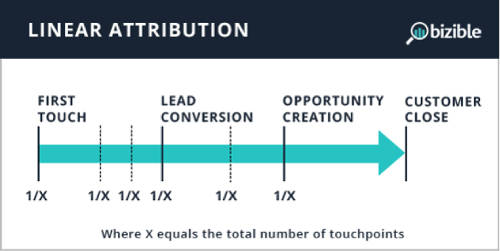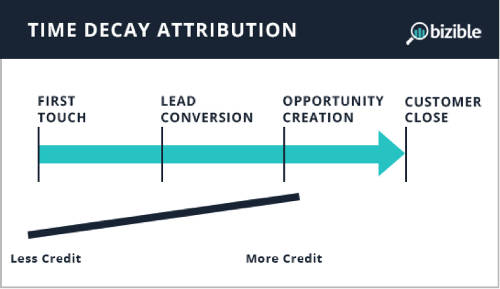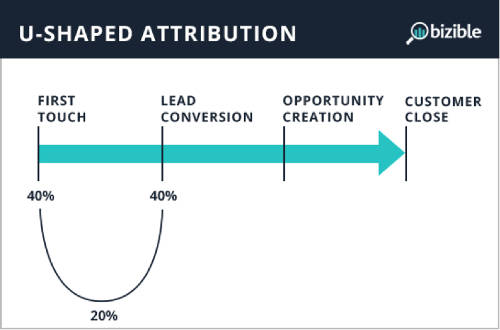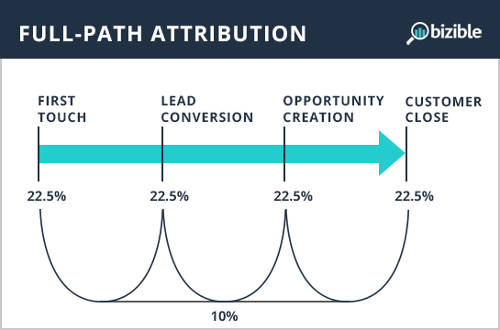Marketing measurement is having a moment. Let me clarify: Accountability has always been important for marketers, but lately there's been renewed interest—and investment—in piecing together the attribution puzzle.
Beyond engagement metrics or pipeline reporting, the next-generation CMO is building an organization that runs on comprehensive, granular, and nuanced performance metrics.
In fact, 91% percent of CMOs reported they are "taking action to better measure marketing ROI in the future," according to a recent Forbes study. The study also found that organizations that strive for "higher levels of marketing accountability" also achieve notably improved growth performance. And in the modern organization, growth is the marketer's mandate.
That leads to an important question: What's the best method for measuring revenue growth and ROI for your business?
Here, I'll share the three methods—each sequentially more complex, but also more accurate—and the pros and cons of each.
Method One: Single-Touch Attribution
There's a misguided notion that marketing attribution is all-or-nothing: You have either a very nuanced understanding of what each marketing touch does for your business, or no understanding at all. But there is a starting point, and it requires minimal sophistication.
Single-touch attribution assigns all the value (pipeline or revenue) to the first or last activity that touched the deal. Most commonly, that means allocating the deal to the source of the first person from a company to engage—often boiled down to "Marketing-sourced" or "Sales-sourced" tracking.
The downside? In a nutshell, the "sourced" perspective is overly simplistic and can lead to poor decisions because one touchpoint gets 100% of the credit. It's like the first date getting all the credit for your marriage (perhaps leading to a lifetime of mini-golf).
In the marketing world, that can lead to underinvestment in nurture and other critical techniques that move the needle after the "first date."
Pros
- Has relatively easy implementation and low cost
- Provides insight into what is driving the top of the funnel
- Gives straightforward insight into cost-per-lead metrics
Cons
- Doesn't account for the influence of subsequent touches, which typically are significant
- Attributes too much credit to lead generation activities; undervalues nurturing touches and contributions from sales
- Can make it hard to account for quality until the deal closes; can be skewed by a particularly large deal or long sales cycle
- Doesn't work for account-based marketing (ABM) because it only accounts for one touch and one person
Method Two: Unweighted Multitouch Attribution
Typically, it takes multiple touches from multiple people to close a deal. Unweighted multi-touch is the simplest way to measure the contribution of each individual touch.
At its core, this attribution method involves tracking every touch and then allocating whatever outcome you're measuring (e.g., revenue, pipeline) evenly across all of the touches. Here's how it works:

Assume a deal worth $100,000 recently closed. Three people were involved in the deal: Person A attended Tradeshow 1 and Webinar 2. Person B attended Tradeshow 1 only. Person C was sent Direct Mail 1 and clicked through to the website as a result.
In that scenario with four touchpoints, each activity is credited with one-fourth of the total credit, or $25K. Linear attribution credits $50K to Tradeshow 1 (because there were two Tradeshow 1 touchpoints), $25K to Webinar 2, and $25K to Direct Mail 1.
Unweighted multitouch attribution allows you to see more granularity in the performance of your marketing efforts. It's also available out-of-the-box to grow into if you're using a sophisticated marketing automation platform. But, it still over-credits and under-credits certain touchpoints, and so it can skew your marketing reporting and investment.
Pros
- Incorporates nurturing touches as well as lead generation
- Can be useful for revenue cycles with many touches
- Focuses on all contacts associated with a deal (with lead-to-account or opportunity mapping)
Cons
- Having too many touchpoints can dilute credit (e.g., with 100 touchpoints, each gets 1%)
- Over-credits low-impact touchpoints and under-credits high-impact touchpoints
Method Three: Weighted Multitouch Attribution
If you're ready to get super-precise about your attribution, look no further than a weighted attribution model. In short, a weighted model attempts to negate the downsides of an unweighted multitouch attribution method.
There are different types of weighted models; each has different levels of usefulness, helping marketers answer different types of questions:
- Time-decay
- U-shaped or position-based
- W-shaped
- Full-path
- Custom
- Machine-learning-recommended
Time-Decay
The time-decay model gives more credit to the touchpoints closest to the conversion. It assumes that the closer a touchpoint is to the conversion, the more influence it had on the conversion.
The problem with that assumption is that it will never give a fair amount of credit to top-of-the-funnel marketing efforts (e.g., awareness, lead gen) because those will always be the farthest away from the conversion.

U-Shaped
The U-shaped model, which some organizations call "position-based," is a great multitouch attribution model for marketing teams that focus on lead generation.
It's a multitouch model that tracks every touchpoint, but rather than give equal credit to all touchpoints, as the linear model does, it emphasizes the importance of two key touchpoints: the anonymous first touch and the lead-conversion touch. Those two touches get 40% credit each, and the remaining 20% is equally split among the other touchpoints.
The downside to this model is that it doesn't consider marketing efforts beyond lead conversion. That makes it an ideal model for lead reports or for marketing organizations that don't do marketing targeted to prospects beyond the lead stage.

W-Shaped
The W-shaped model takes the concepts of the U-shaped model to the opportunity stage, which many organizations consider the end of the marketing funnel. The W-shaped model gives emphasis to the opportunity-creation touch, in addition to the first touch and lead-conversion touch. Those three key touchpoints receive 30% credit each, and the remaining 10% is split evenly across everything else.

Full-Path
The full-path model adds a fourth key stage: closed-won. In this model, each of the touchpoints at the four key stages receives 22.5% of the credit. The remaining 10% is split across the remainder.
Although it may seem that having more key touchpoints provides a better and more accurate representation of the customer journey, this model is most appropriate for marketing organizations that do marketing to active sales opportunities—so if your AE takes full control of messaging to an opportunity, this may not be the best fit for you.

Custom
Not seeing your business's buyer journey reflected in the above? Creating your own weighting method is appropriate for marketing teams that have mature analytics and operations functions. Or, if you don't know where to start with a custom model, some sophisticated attribution providers offer custom models based on proprietary machine-learning algorithms.
Whether you start from scratch or you use a recommended model, custom attribution modeling requires a little more analytical maturity and thoughtful justification. But, if done correctly, it can be one of the most accurate ways to measure marketing's impact on the buyer journey.
Crawl, Walk, Run
We've shared a holistic overview of the types of attribution available to today's marketing organization, but it's important to note that you don't have to pick one and stick with it forever. Most organizations begin their journey of marketing measurement with the first method (single-touch), and over time they mature to more advanced methods—a crawl, walk, run approach.
The important thing is that you make your way toward a more rational and evolved type of accountability—one befitting Marketing's emerging role as the growth center of the modern organization.




